Do you have a question about the Hitachi RAS-5FSN and is the answer not in the manual?
Covers DANGER, CAUTION, WARNING statements regarding electrical shock, refrigerant, and flammable materials.
Details dangers associated with pressure vessels and modifications to high-pressure switches.
Notes on ensuring all information is included, design improvements, and intended use of the air conditioner.
Information on unit control, piping length, capacity, and model combinations.
Guidelines for powering the system, checking the outdoor unit, and compressor warm-up.
Description of the remote control interface, buttons, indicators, and model information.
Steps for operating cooling, heating, dry, and fan modes, including temperature and fan speed settings.
Procedures for timer operation, ventilation, automatic modes, and swing louver adjustments.
Instructions for setting and fixing the air louvers for different unit types.
Explanation of automatic controls like 3-minute guard, frost prevention, and automatic restart.
Details on slow air control, defrost cycle, overload prevention, and hot start during heating.
Identifies sounds and phenomena that are not considered malfunctions.
Guidance on diagnosing issues and contacting service technicians.
Diagram and list of parts for the 5HP FSN outdoor unit.
Illustration of the refrigerant cycle for FSN(E) models.
Instructions for safely lifting, transporting, and handling the outdoor unit.
List of accessories provided with the outdoor unit for installation.
Guidelines for selecting a suitable installation location, including clearance and ventilation.
Advice on environmental factors like wind, snow, short-circuiting, hood dimensions, and foundation.
Requirements for copper pipes, including material selection and cleaning.
Procedures for installing and properly suspending refrigerant piping.
Specific instructions for connecting refrigerant piping to the outdoor unit.
Required torque values for tightening flare nuts and flange bolts.
Detailed steps for performing system evacuation and charging with refrigerant.
Guidelines for insulating pipes and operating stop valves correctly during charging.
Torque values for drain piping and safety data on refrigerant concentration and leakage.
Procedures for calculating concentration and implementing KHK standard countermeasures.
Information on the optional drain kit for collecting outdoor unit condensation.
Method for calculating the necessary additional refrigerant based on system configuration.
Step-by-step calculation for additional refrigerant needed for liquid piping.
Identifying which indoor units require additional refrigerant charge.
Verification of electrical components, code compliance, and grounding.
Diagrams and instructions for wiring the outdoor unit's power and control circuits.
Guide to setting DIP switches for various functions like cycle, capacity, and test run.
Details on wiring between indoor and outdoor units and H-Link communication systems.
Table specifying minimum wire gauges for power and transmission circuits.
Essential checks to perform before initiating the test run procedure.
Step-by-step guide for executing the test run using the remote controller.
Instructions for performing a test run using DIP switches on the outdoor unit's PCB.
A comprehensive table of alarm codes, their content, and leading causes for diagnosing issues.
Configuration details for safety and control devices within indoor units.
Configuration details for safety and control devices within outdoor units.
| Brand | Hitachi |
|---|---|
| Model | RAS-5FSN |
| Category | Air Conditioner |
| Language | English |



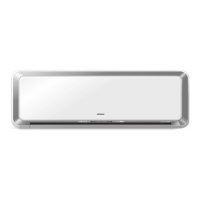


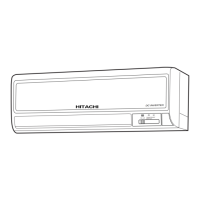
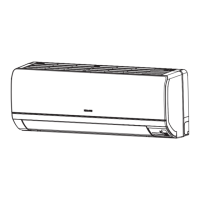

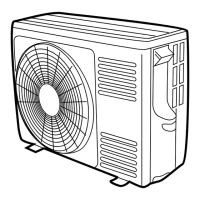
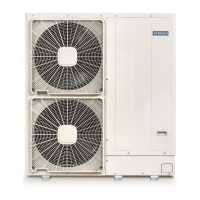

